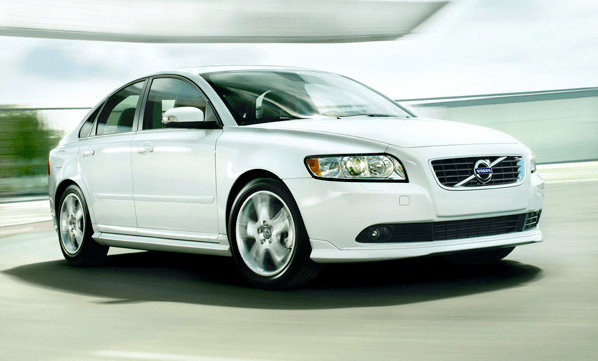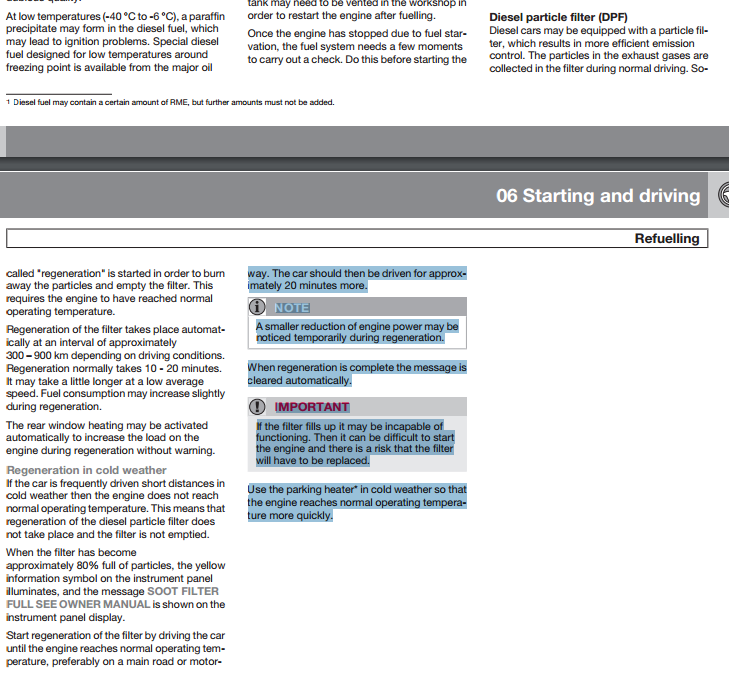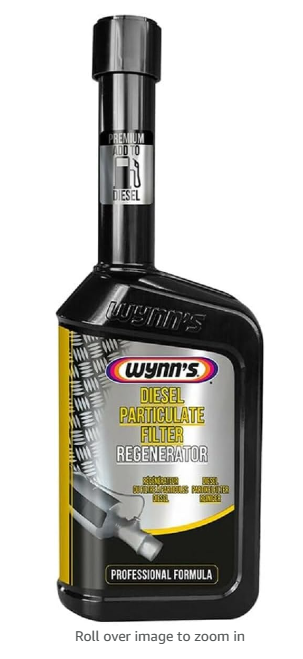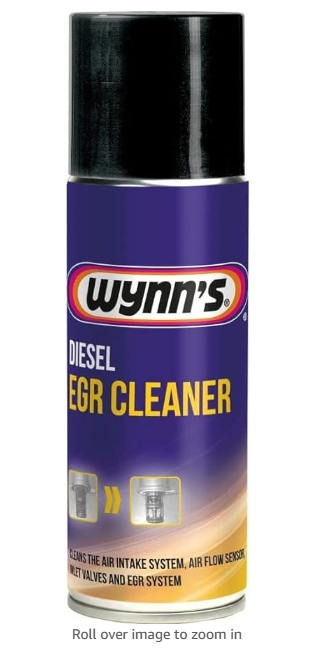
As is often the case, our vehicle specific diesel particulate filter FAQs for help are published after a heart felt plea for information and a shoulder to cry on.
This time it’s a close friend who has been gifted a post Christmas present in the form of a dreaded DPF dash light on his 58 (2011) plate Volvo S40 1.6 diesel (Eco). Considering his sub 10 mile commute to the office we’re not entirely surprised that its gone in such a short time.
I was rather shocked to see how Volvo deal with DPF cleans in their smaller 2.0 and 1.6 litre diesel engines and rather saddened by what I have discovered. They are destined to fail by design and to be replaced as a “service” item at just 75,000 miles. My expert “googling” suggests that a bill of £700 to £1000 will be heading your way for the job.
This rather shocking shelf life is due to the additive which is automatically added to the fuel tank from a special tank located underneath it. The additive, namely Eolys is a cerium/iron based solution which is designed to assist in DPF regenerative during normal driving conditions. According to Volvo the tank should be refilled every 36k miles and if for any reason it’s empty the car will not attempt any kind of DPF regeneration.
Much like other DPF regeneration there are specific conditions which must be met, meaning those motorists who commute short journeys are already doomed.
This is designed to help ensure a successful DPF regeneration however the Eolys additive leaves a small ash residue. Unlike the soot build up within a DPF, ash can not be burnt off, so when its full of ash the DPF will need to be replaced. The additive itself is also part of your serviceable items, meaning you’ll be charged anything up to £100 for your additive tank to be topped up.
Thanks Volvo.
As usual here’s the official DPF information from the Volvo Owners Manual
Diesel particle filter (DPF)
Diesel cars may be equipped with a particle filter, which results in more efficient emission control. The particles in the exhaust gases are collected in the filter during normal driving. So called “regeneration” is started in order to burn away the particles and empty the filter. This requires the engine to have reached normal operating temperature.
Regeneration of the filter takes place automatically at an interval of approximately 300 – 900 km depending on driving conditions. Regeneration normally takes 10 – 20 minutes. It may take a little longer at a low average speed. Fuel consumption may increase slightly during regeneration.
The rear window heating may be activated automatically to increase the load on the engine during regeneration without warning.
[ad]
Regeneration in cold weather
If the car is frequently driven short distances in cold weather then the engine does not reach normal operating temperature. This means that regeneration of the diesel particle filter does not take place and the filter is not emptied. When the filter has become approximately 80% full of particles, the yellow information symbol on the instrument panel illuminates, and the message SOOT FILTER FULL SEE OWNER MANUAL is shown on the instrument panel display.
Start regeneration of the filter by driving the car until the engine reaches normal operating temperature, preferably on a main road or motor way. The car should then be driven for approximately 20 minutes more.
NOTE A smaller reduction of engine power may be noticed temporarily during regeneration.
When regeneration is complete the message is cleared automatically.
IMPORTANT If the filter fills up it may be incapable of functioning. Then it can be difficult to start the engine and there is a risk that the filter will have to be replaced.
Use the parking heater* in cold weather so that the engine reaches normal operating temperature more quickly.
DPF Cleaners At Amazon

The surprising thing is that this prompted him to return to his dealership and trade up to a rather tasty V40… D4 **face palm**
If you’ve had any experience with DPF diesel particulate filters in your Volvo then please comment below. You just might be able to help a fellow Volvo driver dodge the DPF bullet.
You might also find the following articles below of use
- The Diesel particulate filter (DPF) FAQ
- The Exhaust Gas Recirculation Valve EGR FAQ
- Our top five tips on keeping your DPF clean
- Diesel remap & tuning boxes will my diesel particulate filter DPF cope?
- DPF Cleaning specialists reveal top 10 vehicles with DPF issues
- Which cars have the most DPF problems?
- Skoda Octavia iii 2013 Diesel Particulate Filter DPF – Owner’s Manual – Regeneration FAQ
- Hypermiling Top Tips: Top 5 causes of blocked / Failed DPF diesel particulate filters




I have a 2016 XC90 with 36,000 miles and have just been told that the DPF needs replaced as does all of the connecting pipes as the car went into Limp mode. once replace is this likely to be a re-occuring problem?
That seems very low mileage for a dpf replacement. I would seek a second opinion as this will be very costly.
Is the unit itself defective or full? If it’s full at that mileage it could be an issue with the EGR valve. The car is also still under warranty, Volvo might even offer you a dealer contribution due to the age and mileage of your car. Let us know how you get on.
Got my V50 2009 and around 90000 miles went to limp mode, after trying 2 times with chemicals in different garages, and paying around £350 each time ( did not work) I took my DPF out of the car and took it to a garage that cleans it with high pressure water.
Emptied all the residues and it now like new.
Took £80.
Got to have the car out of commission for a day or 2 though and the garage was near Swindon
I had my v70 filter cleaned but I still get the engine Reving higher than normal and a slight pulling and sometimes a smell from the exhaust I do stop start all day with my work
my 2010 C30 1.6d had the eml on, with no power and not reving past 2900, 3 fault codes stored relating to dpf and maf sensor, cleared codes, then forced dpf regen, oddly the diagnostics wouldn’t communicate and failed regen until we fooled it by choosing citroen not volvo….. seems fine now
I have a Volvo V40 1.6 Diesel, 4 years and 49000 Miles now. I do 60 miles per day, mainly in the M4, this is driving at 70-80 Mph and i had to change my DPF when i reached 32.000 Miles. Volvo agree to pay the 70% of the cost. But i guess that this will happen again as it seems a design problem. I did all my annual services in Volvo. Not very happy with this topic and i wondering if this is possible to request the 100% of the cost if this will happen again arguing that it is a Volvo design issue.
I have a volvo c70 automatic.
I had warning re soot and ignored it.
Car. Subsequently had problems getting no power in any gears.
Could this be the dpf filter?
Been quoted 1k just to diagnose and possible 7k of gearbox etc needs replaced.
Please help as I’m a disabled driver needing my car daily.
Hi Gary.
1K for diagnostics is completely over the top. If the dpf light is still on then it would put the car into limp mode and result in low power.
I’d advise taking it to another garage and or a main dealer. They can be a little more expensive but should not try to rip you off.
Hope that helps.
Cheers Karl
A good note. It raises a thought: what if I will not add DPF regeneration fluid, but use DPF-cleaner diesel additives instead. Will that prolong the life of me DPF filter? I have just bought Volvo V90 1.6 D2 with 150 000 miles on the clock. I was thinking of checking and adding the regeneration fluid, but now think, if it’s worth it?
It all depends on how much Ash is in the dpf. The fluids will help the filter regenerate but they won’t clear the actual ash, only the soot.
Might be worth seeing if you can have a garage scan the car to give you an idea how full the dpf is. Money better spent there than on fluids, especially if it’s near end of life.
Got my V50 2009 and around 90000 miles went to limp mode, after trying 2 times with chemicals in different garages, and paying around £350 each time ( did not work as it was full) I took my DPF out of the car and took it to a garage that cleans it with high pressure water.
Emptied all the residues and it now like new.
Took £80.
Got to have the car out of commission for a day or 2 though and the garage was near Swindon
Hello! My V70 1.6D 80KW from 2011 takes me to work every day 5 km and then same 5 km back to home. I have an ordinary OBD Bluetooth interface ($ 5 approx.) And I monitor my DPF Soot and DPF Temperature. On my Android APP, DPF Soot is displayed incorrectly: CASE 1 – “DPF Soot 0” when all is OK and don’t need to start Regeneration, and CASE 2 – “DPF Soot 0.01”. In these conditions when “DPF Soot 0.01” (CASE 2), after work, on the same day, I take a walk outside the city of approx. 10 – 15 KM, and I start to keep an eye on “DPF Temp” which normally (CASE 1) is between 200 and 350 degrees Celsius. Now, in CASE 2, “DPF Temp” is around 550 – 600 degrees Celsius. After about 10 KM “DPF Temp” starts to drop, reaches below 350 degrees Celsius and “DPF Soot 0”. This was a successful DPF Regeneration. This happens about once a week, once in approx. 60 – 80 KM to drive in conditions 5 KM to work, and 5 KM back to home, driving in the city, max. 50 km / h, road of approx. 10 minutes.
If I drive out of town, let’s say a trip of approx. 300 KM, at every 60 KM +/- 3 KM, DPF Temp increases to 550 – 600 degrees Celsius for approx 10 KM, DPF Soot remains 0 all the time, and so on, the cycle keeps repeating every 60 KM + / – 3 KM. (Probably Engine ECU considers that there are optimal conditions and Start Rgeneration)
I’m not 100% sure if all this is good or bad, but I drive in these conditions for approx. 1 year and approx. 6000 KM.
Greetings from Romania!
Hello A.H.,
which is the OBD Bluetooth interface and APP you are using?
After recently purchasing a 2010 V50 1.6 Drive with 56K on the clock I discovered that the pre DPF pressure sensing line had been split for quite some time, this had been preventing the DPF regenerating which in turn clogged it solid. Tried cleaning the DPF in situ with various spray can products but only succeeded in cleaning out my wallet. Also discovered by looking back through its service history that the Eolys fluid had never been topped up by the local garage which was used for servicing (another reason for DPF not regenerating). In the end I had to bite the bullet and buy a new/reconditioned DPF (which I fitted myself in 2 hrs), replace the DP lines and also got the empty Eolys tank filled up. Wallet now another £700 lighter, thanks Volvo! On the plus side the car now averages 72 mpg on my 90-mile round commute and no longer goes into limp mode. Quick note: once the DPF has been changed or cleaned, the DPF odometer will require resetting to zero by a main dealer or Volvo specialist.